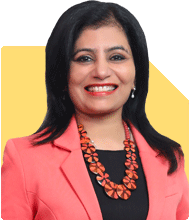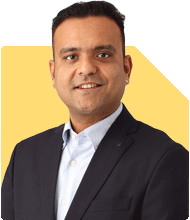I am 38 years old unmarried female. I have a housing loan of 54 lakhs (17 years remaining) emi of 51588 and car loan of 13.5k for 2 years remaining. I have 12 lakhs saved in mutual funds, 10k per month going in LIC and 25k per month going to gold kitty. I get a salary of 2.75 lakh per month and want to buy another home on loan worth about 1 cr. Please advise what changes i should make in my spend
Ans: You are earning well and managing some savings already. That is appreciated. However, you are also carrying high EMIs and considering more loan. Your spending needs a sharper plan. Let me now analyse it step by step from a Certified Financial Planner point of view.
Your Current Financial Snapshot
Age: 38 years
Salary: Rs. 2.75 lakhs per month
Home loan: Rs. 54 lakhs, EMI Rs. 51,588, with 17 years remaining
Car loan EMI: Rs. 13,500 for 2 more years
Mutual fund savings: Rs. 12 lakhs
LIC premium: Rs. 10,000 per month
Gold kitty: Rs. 25,000 per month
Planning to buy a second home worth Rs. 1 crore with loan
Appreciation Where It’s Due
You earn a strong income and have controlled lifestyle inflation
You are investing in mutual funds
You are maintaining discipline in EMIs
Housing Loan – High Burden Now
Rs. 51,588 EMI already takes a big part of income
It runs for 17 more years. That’s a long commitment
It reduces your financial flexibility
Planning a second home loan now is risky
EMI of second home will cross Rs. 70,000 easily
Your total EMI burden will then cross Rs. 1.3 lakhs monthly
That is nearly 50% of your monthly income
Car Loan – Short Term Impact
EMI of Rs. 13,500 will go for 2 more years
While manageable, it adds pressure in short term
Till it ends, your cash flow is stretched
LIC Policy – A Mistake That Needs Correction
You pay Rs. 10,000 per month in LIC
That is Rs. 1.2 lakh per year
LIC traditional plans give very low returns
They mix insurance with investment
Better to separate both goals
Pure term insurance gives more cover for lower cost
Surrender LIC policy if it’s endowment or money-back plan
Reinvest that amount in actively managed mutual funds
This helps in better long-term wealth creation
Gold Kitty – Not a Productive Use of Funds
Rs. 25,000 going to gold every month is not smart allocation
Gold does not give regular income
It does not beat equity returns in long term
Gold is good for diversification, but not in large quantity
Keep gold to less than 10% of total portfolio
Stop gold kitty and reroute to equity mutual funds
Second Home Purchase – A Caution Needed
Buying second house now is not a wise choice
You already have one big home loan
Second loan will overload your monthly cash flow
Your future flexibility will get locked in
You will also bear property tax, maintenance, and vacant risk
Property prices don’t rise every year
Real estate is not a liquid investment
If you lose job or face emergency, selling a house is hard
It cannot be your emergency backup
Rental income may also not match EMIs
Better to focus on financial freedom than owning many properties
Mutual Funds – Smart Start but Needs Better Strategy
You saved Rs. 12 lakhs in mutual funds
That’s a strong beginning
Don’t stop SIPs or investments now
Increase SIP amount after car loan closes
Continue with actively managed mutual funds
Avoid index funds
Index funds only track market
They fall when market falls, no cushion
Active funds have experts managing them
They shift from weak to strong stocks
Performance is higher over long time if chosen well
Direct Plans – Not Ideal for Your Situation
If you have direct mutual funds, reconsider them
Direct plans may save cost, but you miss guidance
A Certified Financial Planner gives you personalised planning
You get goal-based fund selection
You also get portfolio reviews and timely changes
In emotional market conditions, you need expert support
Regular plans through MFD with CFP help you invest wisely
Action Plan – Spending and Investment Adjustments
Do not go for second home loan now
Keep your EMI to income ratio below 30%
Stop gold kitty immediately
Reallocate that Rs. 25,000 to mutual fund SIPs
Surrender LIC policy and invest that Rs. 10,000 also in mutual funds
When car loan ends, redirect Rs. 13,500 into SIPs
This way, Rs. 48,500 monthly can go into high growth investment
What to Do With Current Mutual Funds
Review your current fund choices with a CFP
Ensure funds match your risk profile and goals
Check if the mix is well balanced between large, mid, and flexi-cap
Remove poor performing funds and add better ones
Use fund switching if needed
Emergency Fund – Is It There?
You need at least 6 months of expenses saved
This helps during job loss or medical issue
Keep it in FD or liquid mutual fund
Don’t depend on credit cards or loans in emergencies
Insurance Coverage – Double Check Needed
Do you have term insurance of at least Rs. 1 crore?
If not, take it now before buying anything else
Term plan is must for all earning individuals
Also get a separate health policy
Corporate health cover alone is not enough
Tax Planning – Use Efficiently
Use ELSS funds for tax benefit under Section 80C
They give better returns than LIC or PPF
Lock-in is 3 years only, not 15 like PPF
PPF is still useful for partial long-term savings
Mix both ELSS and PPF for a good 80C strategy
Retirement Planning – Begin Now
You are 38. Retirement can be 15-20 years away
After retirement, no fixed income will come
You must build corpus now to live stress-free later
Mutual funds help create that retirement kitty
SIPs give compounding benefit over years
Keep increasing SIPs every year with salary rise
Have a separate SIP just for retirement
Freedom vs. Debt – Choose Wisely
Owning too many properties gives emotional satisfaction
But financial stress rises with each new loan
Your life becomes EMI-driven, not freedom-driven
Instead, become debt-free earlier
Then focus on travelling, health, hobbies and peace
Yearly Review – Must for Success
Every year, sit with your Certified Financial Planner
Review your spending, EMIs, investments and insurance
Adjust funds based on market and life changes
Keep your goals in focus every year
Finally
You are financially stable and responsible already
But a second house now is not needed
Instead of loan, choose investments for long term
Control current high EMIs before taking new ones
Stop gold kitty and LIC policy
Redirect to mutual funds for wealth building
Build strong retirement and emergency fund
Stay away from unnecessary real estate burden
With structured planning, your financial future will be strong
Best Regards,
K. Ramalingam, MBA, CFP,
Chief Financial Planner,
www.holisticinvestment.in
https://www.youtube.com/@HolisticInvestment






















